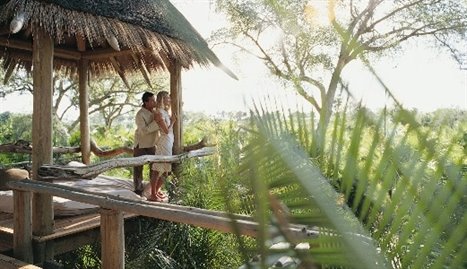10 Natural Wonders to See Before They Disappear
By Laurel Delp
BUDGET TRAVEL
You've heard the grim timelines: if warming continues, the Great Barrier Reef will be bleached by 2030; glaciers in the Swiss Alps, on Mt. Kilimanjaro, and in Glacier National Park will disappear in under 40 years; and Arctic ice melt will send polar bears into extinction. The immediacy of these timelines prompts flocks of curious eco-tourists to travel to environmentally fragile areas. Tourism is both bane and boon: it can add strain to already distressed areas, but it can also provide income, which in turn can help preserve these wonders. We spotlight 10 areas under threat — some lesser known than others — that can still be visited responsibly. Should you decide to plan a journey, we've recommended our favorite tour operator for each destination. In some cases the price tag may be higher than your average vacation, but consider it an investment in Mother Earth.
Belize Barrier Reef

One of the most diverse reef ecosystems in the world is home to whale sharks, rays, and manatees, as well as sturgeon, conch and spiny lobsters.
The Threat: Like the Great Barrier Reef in Australia, the Belize Barrier Reef leads a tenuous existence. A section of the nearly 700-mile-long Mesoamerican Reef that reaches from Mexico to Honduras, the Belize reef suffered a severe bleaching in 1998, with a loss of 50 percent of its coral in many areas, including much of its distinctive staghorn coral. Since the bleaching, its decline has continued, due to global warming of the world's seas, agricultural pollution, development, and increasing tourism, which has given rise to more coastal development and an invasion of cruise ships.

Others on the list include:
The Congo Basin
 |
Roads cut by loggers and miners have also enabled poachers and bushmeat hunters to prey on endangered animals like bonobos (pictured), forest elephants, and okapis.
(Courtesy © Frans Lanting/Corbis) |
The Dead Sea
 |
The Dead Sea is the lowest spot on earth (1,312 feet below sea level), has 10 times more saline than seawater (so humans float like corks), and is believed to contain therapeutic minerals.
(Courtesy LiorDrZ?/Getty) |
The Everglades
 |
At least 20 species in the Everglades are endangered including panthers, turtles, manatees, and great white egrets (shown here).
(Courtesy Rasmus Bøgeskov Larsenøg/Flickr) |
Madagascar
 |
Over 80 percent of Madagascar's flora and fauna are found nowhere else on Earth, thanks to millions of years of isolation in the Indian Ocean off of Africa. This photo was taken in Ranomafana National Park in the southeast portion of the country.
(Courtesy Effervescing Elephant/Flickr) |
The Maldives
 |
Only 200 of the islands of the Maldives are inhabited, and none rise higher than eight feet above sea level. Few scientists hold out much hope for the country if global warming continues to melt the ice caps and raise sea levels. Shown here: Baa Atoll.
(Courtesy Sakis Papadopoulos/Getty) |
The Poles
 |
In the Arctic, the polar bear is also endangered by the steady loss of sea ice, which has decreased 3 percent per decade since the 1970s.
(Courtesy Ansgar Walk/Wikimedia Commons) |
Rajasthan, Ranthambore
 |
Ranthambore, in the Indian state of Rajasthan, is one of the best places in the world to see tigers. If extreme efforts are not undertaken, these big cats may be extinct within our lifetime—possibly in as soon as a dozen years.
(Courtesy Saran Vaid/age fotostock) |
The Tahuamanú Rainforest
 |
Parrots and macaws feed off of the world's largest salt lick in the Tahuamanu rainforest.
(Courtesy Frans Lemmens/Getty) |
The Yangtze River Basin
 |
Exotic creatures such as giant pandas, dwarf blue sheep, Yangtze finless porpoises, and Siberian cranes aren't the only ones who call the Yangtze Basin home—so do some 400 million people.
(Courtesy Tan Wei Liand Byorn/Wikimedia Commons) |
To read the full article you may
click here.
































No comments:
Post a Comment